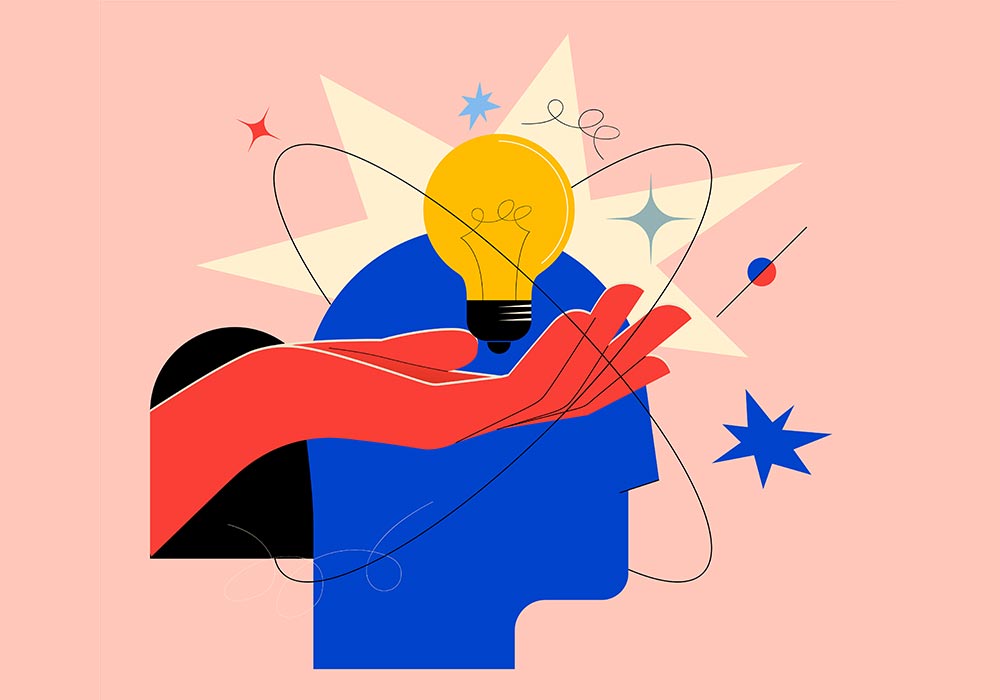For example,
Humans are creative. We’re born into a created habitat, but we don’t stop co-creating it. We create products, services, buildings, musical pieces or educational proposals. We are creative by nature. However, the actual creation of a product, service or process is only one part of the creative process. It’s an inherent and constituent part of the creative project, but not the only one. For the process to be complete, that which is created must be recognised by others. Therefore, creation must be accompanied by recognition.
What will I read about in this article?
The relationship between creativity and recognition is more complex than it appears at first glance. The two processes have often been understood separately, as if creativity took place in a neutral space-time, but this is not the case. Creativity has a place in a given context, and this context can value, accompany and recognise the creative process of creators to a lesser or greater degree, encouraging or discouraging creativity.
The three main theories of creativity in organisations include the work environment as a key factor for the creativity of their employees. And within this work environment, the key player is the supervisor, who, by providing
For example,
Along these lines, another study that used mixed methods (surveys plus interviews) to understand the relationship between leadership and employee creativity revealed that some positive managerial behaviours such as support, recognition, and monitoring were related to employee creativity. Therefore, leaders have the ability to create a work environment that facilitates employee creativity.

One possible explanation for this relationship between leadership and employee creativity can be explained by trust and autonomy. Supervisor support and recognition fosters confidence in team members, and this confidence is related to the generation of ideas. In turn, some of these managerial behaviours foster healthy autonomy in employees, and this autonomy and freedom allows for the generation of ideas.
Moreover, it’s not only leaders who play a role, but also the company’s own programmes and policies. A Deloitte study found that in companies with recognition programmes, employees are 14% more engaged and productive than in organisations without recognition programmes and policies.
Sometimes recognition can be the enemy of creativity. Especially public recognition. In a recent study published in the Journal of Applied Psychology, the authors found that rewarding creators of novel concepts on their first product or idea with prizes or other forms of recognition can significantly reduce their likelihood of generating future creative work. One reason for this is due to fear of failure. Not wanting to fail, award winners do not take as many risks, thus hindering their own creativity.
Another study, published this year in a leading management journal, revealed similar results in relation to public recognition. The authors wanted to understand what the effects of recognition on creativity were for those bands nominated for the Best New Artist Grammy. To do so, Harrison, Askin and Hagtvedt examined the evolution of the 52 nominated groups during the 1980s, both from qualitative material (4,130 pages of text from interviews and video transcripts made with the media) and quantitative data (number of albums produced, positions in the charts, etc.). We tell you in a little more detail about their conclusions below.
What’s interesting about the study is that in the face of the same phenomenon (recognition for good work with a Grammy nomination) the groups opted for different strategies or orientations with different implications for their future creativity.
27 of the 52 bands opted for a strategy that the authors defined as “absorbing recognition“. This strategy consisted of desiring more recognition once the first recognition had been obtained. With the first recognition, the thirst to be recognised again grew and they worked in this direction. To achieve this, these groups chose to internalise the expectations of the public (produce what they thought the public would like), and to incorporate the voices and suggestions of the music industry managers (follow their advice to “get recognised again”).
This strategy in turn usually involved speeding up the creative process, recreating to some extent what had already been produced or created before, without time for experimentation. This is similar to what happened in the previous study. The authors also observed that in these bands, members begin to compete with each other, instead of collaborating, generating tensions that sometimes ended in break-ups. The bands that opted for this strategy are the ones that in later decades had lower productivity (fewer albums), more break-ups, and a lower level of criticism than bands with other strategies. The band that exemplifies this strategy is The Go-Go’s.

A second strategy used by 8 of the 52 bands was that of “insulating recognition“. For them the recognition was also a surprise and a turning point in their careers, but instead of aiming for future recognition, their strategy was based on internalising and listening to the expectations they had of themselves.
If in the previous strategy, music was directed towards what the public wanted, these (minority) groups were oriented towards what they themselves believed they should create, without being influenced by the public’s tastes. These groups maintained trusting relationships with their former managers, producers and advisors, without seeking out new voices.
In short, these groups followed their own voice. Not having the “need” for new recognition, these groups took more time to experiment with new sounds and their creative time processes were longer. Over the decades, these groups that decided to “insulate” themselves from recognition in order to find their own voice and spend more time finding themselves and experimenting have, paradoxically, been the most sustainable and recognised bands, with the highest number of albums released, and the most positive reviews over the decades. The example of this strategy was Sade, but it is joined by Mark Knopfler and Eurythmics with Annie Lennox and Dave Stewart.
Finally, 17 of the 52 bands used a mixed strategy. In this case, these groups followed a strategy of absorbing recognition first, then moving to a strategy of isolating recognition once they realised that they were not following their own path and were not as authentic as they could be. This mixed strategy brought persistent productivity and good criticism. The band that serves as an example in the study is A-ha.
Thus, we observe the complex relationship between recognition and creativity. From the studies reviewed, we can take the following implications for the organisational field:
* Generate a work environment conducive to creativity. As we saw at the beginning of the article, creativity does not take place in a neutral space, but in a given context, and managers have the ability to foster an environment that is conducive to creativity. Some of the behaviours that encourage employee creativity are humbleness, recognition of each other’s work, and emotional and instrumental support.
* Constant work pace. No rush, but no pause. The bands in the last study that decided to speed up the creative process ended up with a lower level of criticism than the teams that spent more time. There is a minimum amount of time to get things right. A programmer needs a minimum amount of time for quality programming, just as they need to prepare a good presentation or set the strategic plan for the year. A culture of rushing or constant acceleration doesn’t help quality deliverables and results. A steady, but not systematically accelerated pace of work is necessary.
* Recognition. Seeking recognition for recognition’s sake alone is not necessarily rewarding, and does not lead to more creativity. In fact, and this is a paradoxical and counter-intuitive result of the study, bands that craved recognition end up losing it, and bands that “insulated” themselves from recognition end up getting it. It’s important to put the weight on process. To make the process authentic and of quality. At the same time, as the penultimate study showed, publicly acknowledging first-time creators can have negative implications for their careers.
Therefore, it is essential not only to recognise the creative process, but also the development process, in order to further encourage creativity.
Sources: